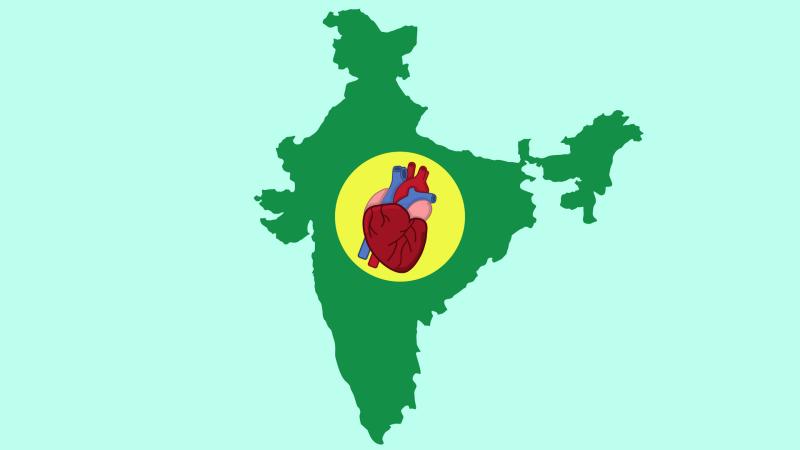
Cardiovascular diseases (CVDs)—diseases related to the heart and blood vessels—are the number one cause of death in the world. In India, CVDs account for close to 25% of the total deaths—higher than tuberculosis and respiratory diseases combined, which are second and the third cause of death. Health officials predict that the risk of CVDs is only going to increase with changing lifestyle, higher levels of obesity, unhealthy diets, lack of physical activity, and overuse of tobacco and alcohol. So, who is at a higher risk of having a cardiovascular disease in their lifetime?
A recent study by researchers at the Harvard University and Harvard Medical School (USA), University of Goettingen (Germany) and the Indian Institute of Public Health (India) have examined the risk of CVDs across India based on the geographical and sociodemographic information. The study, published in the journal PLOS ONE, has analysed data of over 7,97,540 adults between the ages of 30 and 47, from 27 states and five union territories in India.
The study is one of the first to examine the risk of cardiovascular diseases on a national scale with insights at the district level. “Given that India’s health system is largely decentralized to the state level, understanding the variation of CVD risk within India is highly relevant not only to identify target groups for CVD prevention, screening, and treatment programs but also for health system planning at the state and district level”, say the researchers on the motivation of the study.
The researchers used data from the Annual Health Survey and District-level Household Survey from 2010-2014 to collect information about a person’s health and sociodemographic information. Factors like body-mass index (BMI), high blood glucose level, blood pressure and smoking habits, which contribute to the risk of CVDs were collected along with their residence location. The risk factors helped the researchers calculate the risk of an individual developing a fatal or nonfatal cardiovascular disease in the next ten years.
The study found that at a national level, the prevalence of a high CVD risk of greater than 30% in the next ten years, was twice as higher in men as compared to women. Based on the geography, it varied from 10.2% among females in Assam to 24.2% among males in Nagaland and Himachal Pradesh. The average 10-year risk of a fatal or nonfatal CVD event varied widely among states in India, ranging from 13.2% in Jharkhand to 19.5% in Kerala. The risk of CVD was highest in North India, Northeast, and South India.

Fig 1: Age-standardized state-level mean 10-year risk of a cardiovascular disease event by sex.
[Source: http://journals.plos.org/plosmedicine/article?id=10.1371/journal.pmed.1…]
The study also found that adults living in urban areas, as well as those with a higher household wealth or education, tended to have a higher CVD risk. It found that smoking was more prevalent in poorer households and rural areas, whereas body mass index, high blood glucose, and systolic blood pressure—risk factors for CVD—were higher among wealthier families in urban areas. In fact, men had a substantially higher smoking prevalence (26.2%) compared to women (1.8%) and also higher systolic blood pressure than women.

Fig 2: Age-standardized state-level mean 10-year risk of a cardiovascular disease event by rural versus urban area.
[Source: http://journals.plos.org/plosmedicine/article?id=10.1371/journal.pmed.1…]
The study successfully identifies substantial variation in the risk of CVD prevalence across the country which can help in developing targeted CVD programs to those most at risk and in need. “Given that we found that district-level mean CVD risk was positively associated with district wealth and urbanisation, such investments may be crucial to minimising further rises in CVD risk as socioeconomic development and urbanisation in India progress over the coming decades”, say the researchers.
With India’s rapid economic growth leading to higher standards of living, and with it, increasing prevalence unhealthy lifestyles, there could be many more who are ‘urbanised’ and have a high risk of developing cardiovascular diseases.





